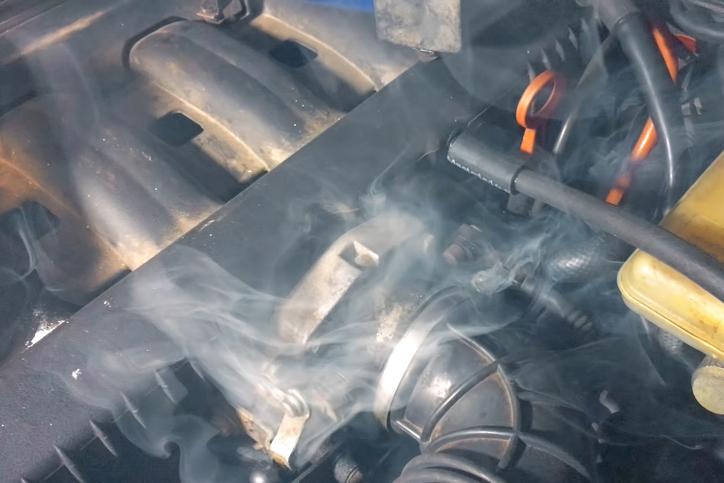
Whether it’s because the vehicle is too old, or because it’s too hot outside, vehicles can easily overheat. However, regular overheating is likely the byproduct of a more serious problem, and one that should be fixed by an auto mechanic. A professional auto mechanic can identify the root cause of the problem—whether with the coolant, the engine itself, or otherwise—and fix it so that the driver can get back on the road as soon as possible.
Here are some tips for how to keep an overheating vehicle under control.
Causes and Signs of an Engine Overheating
Although overheating is considered less likely to happen in more modern vehicles, equipped as they are with sophisticated cooling technology, that doesn’t mean it can’t still happen. There are in fact several ways that a car can overheat due to such root causes as a blockage, malfunctioning radiator fan, broken water pump, or possible coolant leak. An underlying issue can be exacerbated by any hot weather the car is being exposed to. When overheating happens, the indicator on the dashboard will increase when the temperature reaches excessively high levels. If the front of the car is producing smoke-like steam under the hood or unusual odours, overheating is likely.

Coolant leaks are one of the most common root causes, and can happen if parts like water pumps and gaskets have become more worn with time, and are more likely to crack. Another telltale sign is if the engine temperature gauge goes to H on the dashboard. Before bringing the vehicle for repairs, students in auto mechanic courses should recognize that a leak is most likely the issue if the coolant tank is barren or low in quantity. Drivers must also take precautionary steps of their own to mitigate suspected overheating, such as turning their A/C system off, opening their windows, rebooting their engine whilst idling, adding coolant if available, and pulling over if they’re driving on a highway. Once this is done, the driver can restart the engine before bringing it to a mechanic. However, the overheating vehicle should be towed if possible, so that the damage to the engine does not continue.
What Auto Mechanic School Students Should Know About Fixing the Problem
When an engine overheats, this can be both a significant expense for the car owner to have fixed, as well as the cause of significant engine damage if left untreated. To avoid having a vehicle fall victim to regular overheating, it’s important for a graduate of auto mechanic school to routinely inspect the car for maintenance. More specifically, be sure to flush and swap the coolant within clients’ vehicles at regular intervals, and keep a watch out for any problems with engines or radiators during inspections. Be sure to also monitor the electric fan to see if it has burnt out, and make sure the thermostat is functioning properly and hasn’t become stuck.

A mechanic should also tackle the issue by monitoring the oil and coolant levels, as well as any other component of the cooling system that could be at fault. Make sure coolant levels are sufficiently high, and that there is enough oil to lubricate the engine. Moreover, having tools on hand such as coolant, oil, a towel, a flashlight, and heavy-duty gloves is important for getting the job done. In any scenario leading to overheating, it’s worth remembering that this issue must be attended to at the car owner’s earliest opportunity, and that regular subsequent maintenance is a must.
Want to start your auto tech technician training in Vancouver?
Contact Automotive Training Centres today!

